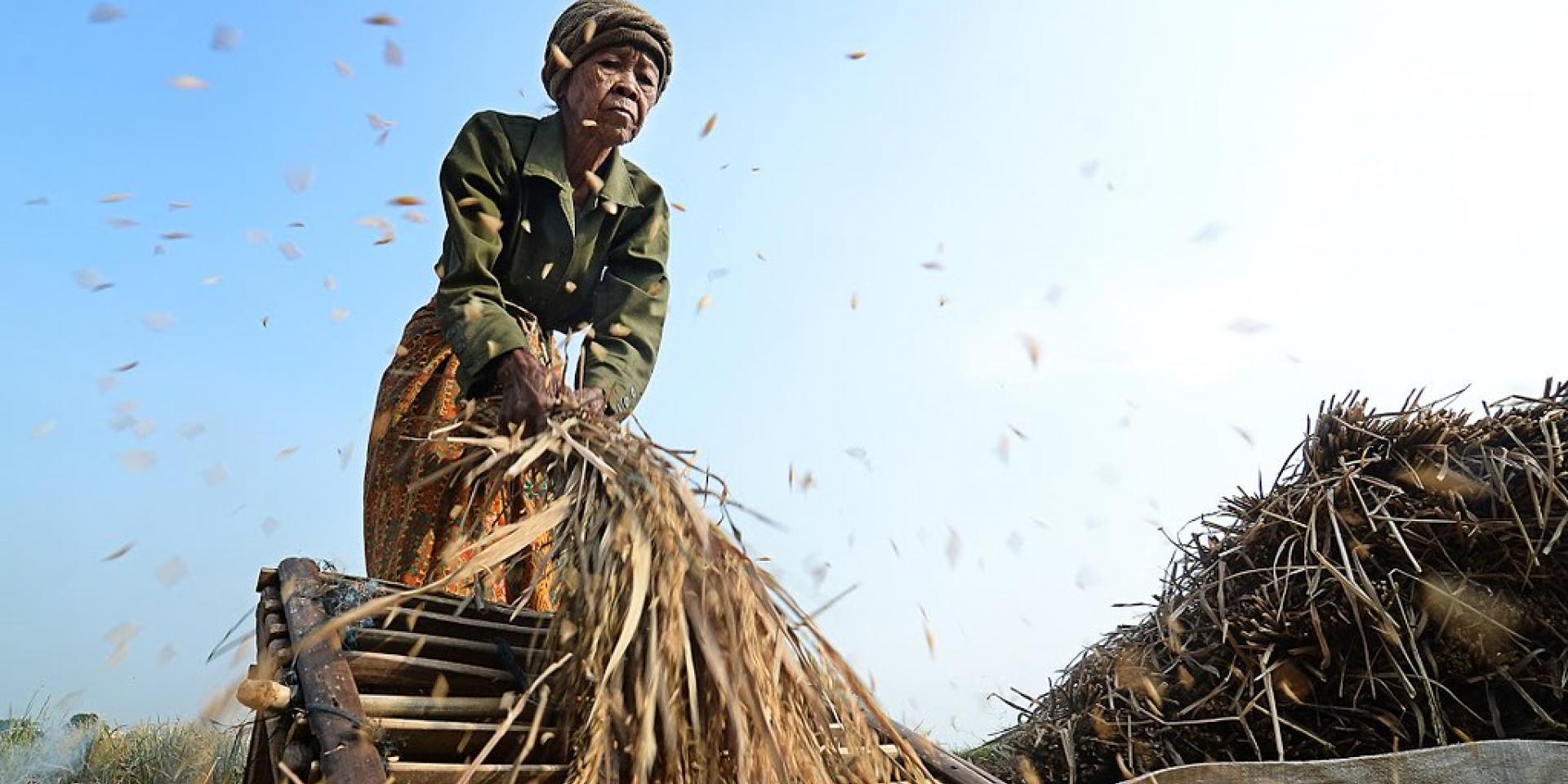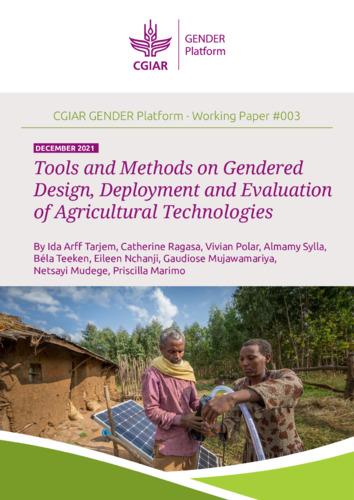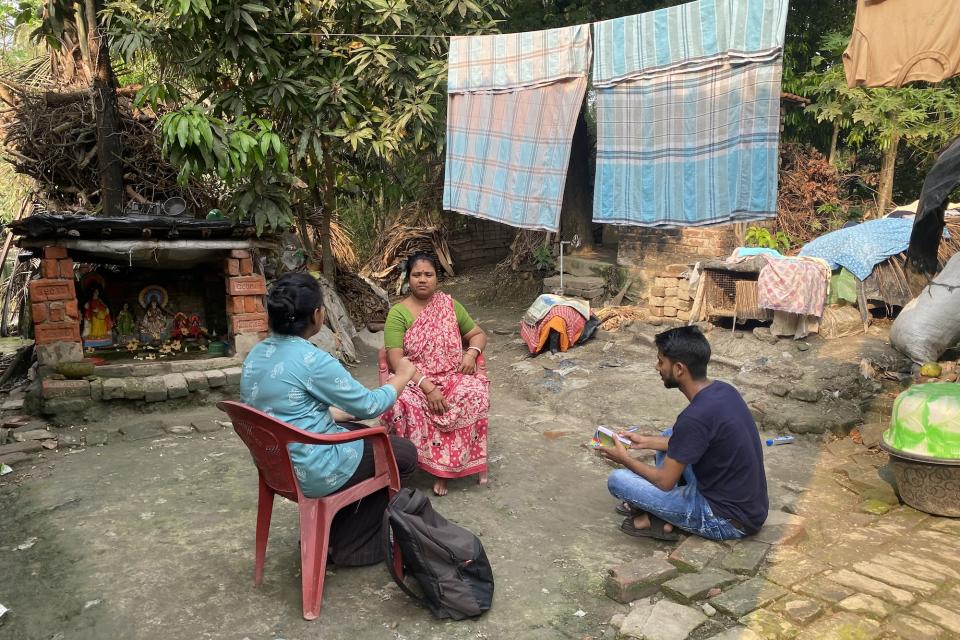Tools for considering gender when developing agricultural innovations

Agricultural technologies can support women’s empowerment, but they can also reinforce unequal gender norms and fail to benefit women. Gender tools can help researchers better understand the unique experiences of women and men to guide the design, deployment and evaluation of agricultural innovations at all stages of their development.
Agricultural innovations are not gender neutral
Technological innovations in agriculture can increase productivity, reduce poverty, mitigate climate change, and increase food and nutrition security. However, technologies are not gender neutral—they shape and are shaped by the social contexts they are developed and distributed in.
For example, in Bolivia, potato selection by size is usually performed manually by women. To be more time-efficient, a technology for mechanized potato selection was introduced. Men were mainly consulted on the technology design and women found the equipment difficult to operate due to the height of the equipment and the weight of the potato bags. As a result, the equipment was not widely adopted. Subsequently taking women’s preferences into account, the equipment was redesigned to be lower and for the potatoes to be gravity fed, making it much easier for women to use it—and adoption levels increased.
Using gender tools can help researchers, scientists and practitioners to better understand the preferences and needs of people who will use their innovations, how they will use them and what they need to continue using them. Our paper identified 11 tools that outline how to collect and analyse data to ensure agricultural technologies are better designed to meet the needs of their users. The tools include:
- training guides
- decision-support tools
- guiding questions
- frameworks
- assessment methodologies
Examples of tools we identified
Checking who will use an innovation improves design
Understanding who will use technologies can help researchers to set R&D priorities to improve design. For example, some researchers have used the Gendered Feed Assessment Tool (G-FEAST) to identify how gender affects livestock feeding. G-FEAST includes questions about livestock ownership, decision-making and labor, as well as questions about potential problems and solutions. When the International Livestock Research Institute (ILRI) started using the G-FEAST tool, it became apparent that women were looking for technologies that would help reduce their drudgery in feeding and caring for animals, whereas men were more interested in technologies that would help them increase feed availability and therefore productivity. ILRI was then able to better design their programs to suit the needs of individual livestock farmers, rather than applying a one-size-fits-all approach.
The G+ Toolbox is another tool to understand potential users and clients. The G+ Customer Profile Tool assists multidisciplinary breeding teams in creating a customer profile that describes the user(s) of a particular crop variety, including their preferences and demand, from a gender perspective. The G+ Product Profile Query Tool, in turn, interrogates product profiles that describe the traits of an ideal crop variety from a gender perspective to indicate whether and how the traits listed may impact women and men in positive or negative ways.
Barriers to technology adoption can be as simple as not owning a mobile phone
For many people around the world, mobile phones are effectively used as cheap and easy computers, allowing people not only to communicate and access information, but also access services and sell their products. However, according to GSMA, worldwide 265 million fewer women than men could access the mobile internet in 2023. So programs that develop apps, for example, to provide farmers with better access to weather data and sales channels, are more likely to reach men than women and poorer farmers, given their relative lack of access to smartphones. Tools are available that provide principles for designing gender-responsive and socially-inclusive digital tools for smallholder farmers. Projects need to ensure that women have digital literacy and equal access to digital tools as men. If the project does not allow providing mobile phones to women, project should strive to look for other tools to deliver information to women farmers, including radio programs.
Develop technologies that women can access independently
Mechanization can help reduce women’s drudgery and labor burden while also increasing their income, assets, and food security. In Nigeria, for example, women process gari from cassava in processing centres where they can rent fryers and presses they do not have at home. Smoke-reducing fryers were developed to reduce women’s exposure to harmful smoke while they are working. However, there was little uptake of this new technology because most processing centres were owned by men, who perceived no direct benefit of investing in the smoke-reducing fryers. Using the guidance Gender in agricultural mechanization helped program managers to understand that men and women participate in different activities along the cassava value chain. Program managers determined that a better approach was to develop smaller-scale processing technologies (e.g., small fryers purchased for or given to women) that women could access independently rather than renting from processing centres.
An example is the small, manually operated handy sheller that was promoted alongside groundnut commercialization in Zambia and Malawi. This technology was assessed using the Gender Control Tool and was found to have reduced drudgery of women and improved incomes without contributing to women’s disempowerment—contrary to prior studies showing that commercialization and mechanization of women’s crops would lead to men taking over. INGENAES Gender Technology Assessment tools also highlighted the importance of working with cooperatives and unions in promoting small-scale planters due to their high level of trust among both women and men farmers.
User-centered design improves understanding and uptake of technologies
A tool for considering gender when promoting small-scale irrigation technologies uses questions to support user-centered design, and refine strategies and approaches to encourage uptake of irrigation technologies. The questions in this tool help to differentiate women’s experiences and needs, so that project managers and researchers can investigate the specifics of why women do or do not adopt irrigation technologies. The tool also helps researchers identify how irrigation technologies can affect power dynamics within a community.
Tools can guide project implementers in scaling innovation
To achieve impacts, promising innovations need to be scaled up, but gender considerations and impacts are often not discussed in innovation cycle. GenderUp is a discussion-based method that supports innovation teams to scale agricultural innovations in a gender responsible and socially inclusive way, focusing on social differentiation and trade-offs faced by various groups of people. Online and in-person workshops in Malawi and Zimbabwe have resulted in innovation teams who better understand social differentiation among their innovation users, and in the development of more inclusive scaling strategies.
Tools can measure empowerment and tackle structural barriers
The Reach, benefit, empower, transform (RBET) framework has been used to analyze and advocate for greater attention to approaches to facilitate women’s empowerment; and tackle both formal and normative barriers to technology development, delivery, adoption and scaling. It was applied to analyze and review a range of innovation delivery methods, seed system, and sociotechnical innovation bundles.
Opportunities to extend the impact of the tools
Our study revealed gaps where future tool development could have the greatest impact.
For example, most tools do not recognise that institutional factors can also affect the incentives and capacities of researchers to integrate gender and social dimensions into the innovation process. Sometimes the gender-blind aspects of a program happen well before it is rolled out in the field.
There is also a need to diversify the tools available for gender-responsive design and dissemination of agricultural innovations. While some tools are applicable to any agricultural technology, most of them address technologies for improving crops (e.g., new varieties, irrigation equipment, etc.). There is a lack of tools specifically designed for livestock breeding and vaccines, aquaculture, and digital technologies. And most of the tools have been piloted or used in sub-Saharan African countries. Expanding the geographic scope of the tools could widen their appeal.
Lastly, while these tools provide guidance, they rely on good data, rigorous data collection, and analysis on how women and men can equally contribute, benefit and seek empowerment using agricultural innovations. This calls for greater investment and rigor in gender-disaggregated data collection and analysis to guide inclusive agricultural-innovation processes.
Increasing women’s use of agricultural technologies starts with listening to and addressing their needs. By continuing to develop the complexity and reach of the gender tools, researchers, program managers, and policymakers can consider the nuances of women’s needs at all stages of the innovation cycle for agricultural technologies.


